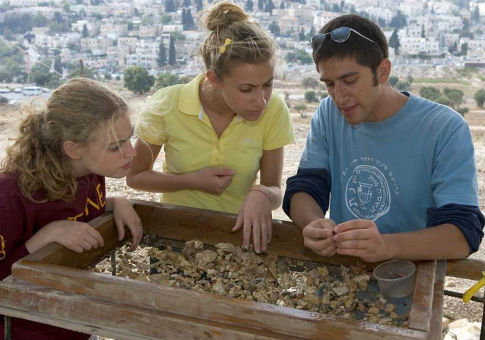Archaeologists believe they have restored floor tiles that adorned entryways to the Second Temple in Jerusalem and its courtyards during King Herod’s rule over two thousand years ago.
The restoration marks one of the most significant achievements in the Temple Mount Sifting Project, an undertaking by the Israel-based Ir David Foundation that is working to excavate the Temple Mount, the most sacred site in Judaism.
"This represents the first time that we can see with our own eyes the splendor of the flooring that decorated the Second Temple and its annexes 2,000 years ago," said Gabriel Barkay, co-founder and director of the Temple Mount Sifting Project.
"Referring to the Temple that Herod built, the Talmud says that ‘Whoever has not seen Herod’s building has not seen a beautiful building in his life.’ Though we have not merited seeing the Temple in its glory, with the discovery and restoration of these unique floor tiles, we are now able to have a deeper understanding and appreciation for the Second Temple, even through this one distinctive characteristic," he continued.
The project was launched after the Islamic Waqf, a Jordanian group tasked with managing the site, illegally excavated at the Temple Mount in 1999, digging up pieces of the Temple and dumping them in a nearby valley.
Frankie Snyder, a researcher for the Temple Mount Sifting Project and an expert on ancient Herodian-style flooring, said he was able to restore the floor’s ornate tile patterns "using geometric principles, and through similarities found in tile design used by Herod at other sites."
"This type of flooring, called ‘opus sectile,’ Latin for ‘cut work,’ is very expensive and was considered to be far more prestigious than mosaic tiled floors," Snyder said in a statement. "The tile segments were perfectly inlaid such that one could not even insert a sharp blade between them."
The restoration of the tiles signified the first time archeologists were able to restore a section of the Second Temple, according to the Temple Mount Sifting Project.
